MILK CARTON
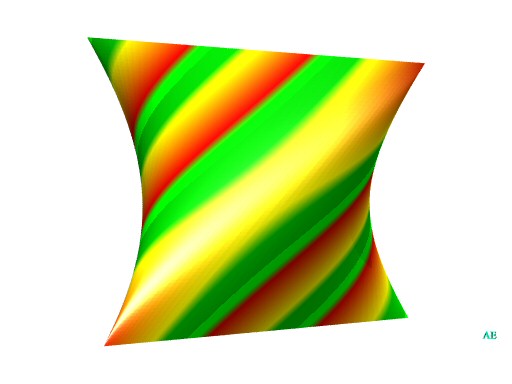
| next surface | previous surface | 2D curves | 3D curves | surfaces | fractals | polyhedra |
MILK CARTON

| Could also be named "humbug"...
Surface studied by Cundy and Rollett in 1951 [Cundy Rollett p. 185 to 188] See also a model from the National Museum of American History. |
| Cartesian parametrization: Cartesian equation: Quartic surface. Volume of the milk carton: Area of the milk carton when k = 1/2: » 7,29a2. The striction
line is obtained for |
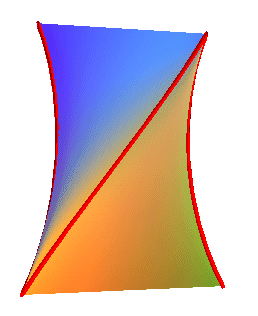 Mik carton with his striction line [Aubert Papelier, T 3, p. 132]. |
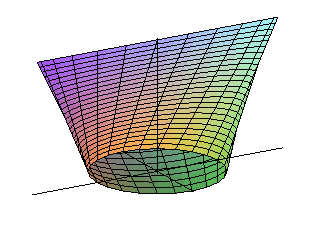
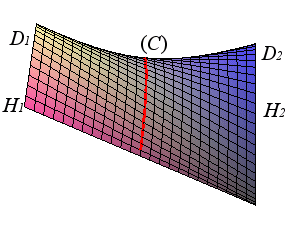
Here, (D1) is ,
(D2) is
and the radius of (C) is ka.
Here is the (more) complete surface:

| The milk carton is also the ruled surface generated by
the lines (M1M2), The length of the segment line [M1M2] then remains constant equal to |
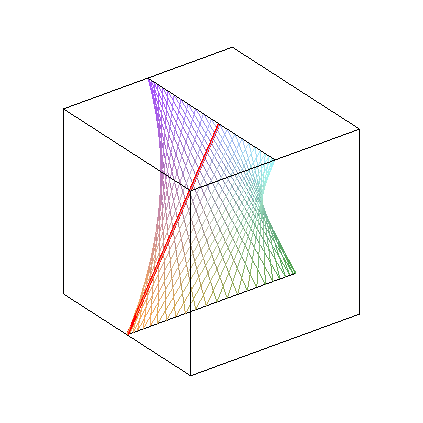 |
| The projection of the segment line [M1M2] on xOy also maintains a constant length: the view from above of a milk carton is therefore a full astroid. |
 |
We also get a generalization of the milk carton by considering
the conoidal surface generated by the lines (M1M2), ,
having two orthogonal sinusoidal motions with any phase difference (
for the milk carton).
| phase difference equal to |
zero phase difference: we get a hyperbolic paraboloid | phase opposition: another hyperbolic paraboloid |
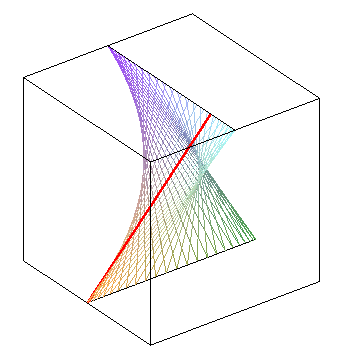 |
 |
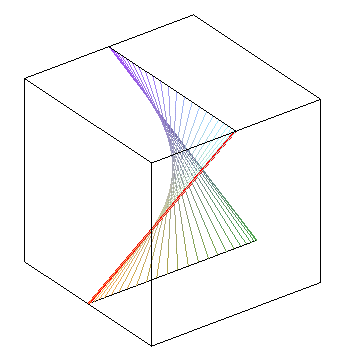 |
|
Be careful, a milk carton like the one opposite made of paper is a developable surface, made from a tetrahedron template by bending the edges... |
 |
Compare to the conocuneus,
as well as the Cayley cubic surface.
| next surface | previous surface | 2D curves | 3D curves | surfaces | fractals | polyhedra |
© Robert FERRÉOL, Alain ESCULIER 2022